
loading

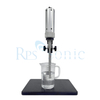

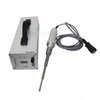

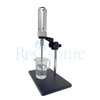



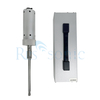

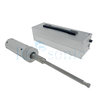
| Availability: | |
|---|---|
| Quantity: | |
RPS-SONO28
RPS-SONIC
40Khz 150W High frequency ultrasonic protein extraction machine, Stepped type Titanium hom
What's the theory of ultrasonic sonochemistry?
An ultrasonic protein extraction machine is a specialized device that uses high-frequency sound waves (ultrasound) to disrupt cell membranes and facilitate the extraction of proteins and other intracellular materials. It is widely used in biotechnology, molecular biology, and pharmaceutical research for its efficiency and ability to maintain protein integrity during the extraction process. Here’s an overview of its components, principles, and applications:
Ultrasound Generator: Produces high-frequency sound waves, typically in the range of 20–40 kHz.
Transducer: Converts electrical energy into mechanical ultrasound vibrations.
Sonotrode (Probe): The tip of the device that emits ultrasound waves into the sample.
Sample Chamber: Holds the liquid or biological sample; can be temperature-controlled.
Control Panel: Allows adjustment of parameters such as amplitude, frequency, and processing time.
Cavitation Effect: When ultrasonic waves pass through the liquid, they create microscopic bubbles that grow and collapse rapidly.
Cell Disruption: The collapse of these bubbles generates intense shear forces, breaking cell walls and membranes to release intracellular components, including proteins.
Protein Solubilization: Released proteins mix with the surrounding liquid for further processing or analysis.
Efficiency: Rapid cell lysis and protein extraction in a matter of minutes.
Versatility: Suitable for various cell types, including bacteria, yeast, plant cells, and animal tissues.
Scalability: Available in bench-top models for research and industrial-scale systems for production.
Preservation of Protein Integrity: Adjustable settings minimize protein denaturation or degradation.
Protein Purification: Extracting proteins for downstream analysis or production.
Enzyme Isolation: Obtaining active enzymes for biochemical studies.
Genomic and Proteomic Studies: Preparing samples for sequencing or mass spectrometry.
Pharmaceutical Research: Isolating active biomolecules for drug development.
Food and Beverage Industry: Extracting proteins or bioactive compounds for functional foods.
| Model | SONOL20-300 | SONOL20-500 | SONOL28-300 | SONOL40-150 |
| Frequency | 20±0.5 KHz | 20±0.5 KHz | 28±0.5 KHz | 40±0.5 KHz |
| Power | 300 W | 500 W | 300 W | 150 W |
| Voltage | 220/110V | 220/110V | 220/110V | 220/110V |
| Temperature | 300 ℃ | 300 ℃ | 300 ℃ | 300 ℃ |
| Pressure | 35 MPa | 35 MPa | 35 MPa | 35 MPa |
| Max Capacity | 2 L/Min | 5 L/Min | 1L/Min | 0.5 L/Min |
| Tip Head Material | Titanium Alloy | Titanium Alloy | Titanium Alloy | Titanium Alloy |
40Khz 150W High frequency ultrasonic protein extraction machine, Stepped type Titanium hom
What's the theory of ultrasonic sonochemistry?
An ultrasonic protein extraction machine is a specialized device that uses high-frequency sound waves (ultrasound) to disrupt cell membranes and facilitate the extraction of proteins and other intracellular materials. It is widely used in biotechnology, molecular biology, and pharmaceutical research for its efficiency and ability to maintain protein integrity during the extraction process. Here’s an overview of its components, principles, and applications:
Ultrasound Generator: Produces high-frequency sound waves, typically in the range of 20–40 kHz.
Transducer: Converts electrical energy into mechanical ultrasound vibrations.
Sonotrode (Probe): The tip of the device that emits ultrasound waves into the sample.
Sample Chamber: Holds the liquid or biological sample; can be temperature-controlled.
Control Panel: Allows adjustment of parameters such as amplitude, frequency, and processing time.
Cavitation Effect: When ultrasonic waves pass through the liquid, they create microscopic bubbles that grow and collapse rapidly.
Cell Disruption: The collapse of these bubbles generates intense shear forces, breaking cell walls and membranes to release intracellular components, including proteins.
Protein Solubilization: Released proteins mix with the surrounding liquid for further processing or analysis.
Efficiency: Rapid cell lysis and protein extraction in a matter of minutes.
Versatility: Suitable for various cell types, including bacteria, yeast, plant cells, and animal tissues.
Scalability: Available in bench-top models for research and industrial-scale systems for production.
Preservation of Protein Integrity: Adjustable settings minimize protein denaturation or degradation.
Protein Purification: Extracting proteins for downstream analysis or production.
Enzyme Isolation: Obtaining active enzymes for biochemical studies.
Genomic and Proteomic Studies: Preparing samples for sequencing or mass spectrometry.
Pharmaceutical Research: Isolating active biomolecules for drug development.
Food and Beverage Industry: Extracting proteins or bioactive compounds for functional foods.
| Model | SONOL20-300 | SONOL20-500 | SONOL28-300 | SONOL40-150 |
| Frequency | 20±0.5 KHz | 20±0.5 KHz | 28±0.5 KHz | 40±0.5 KHz |
| Power | 300 W | 500 W | 300 W | 150 W |
| Voltage | 220/110V | 220/110V | 220/110V | 220/110V |
| Temperature | 300 ℃ | 300 ℃ | 300 ℃ | 300 ℃ |
| Pressure | 35 MPa | 35 MPa | 35 MPa | 35 MPa |
| Max Capacity | 2 L/Min | 5 L/Min | 1L/Min | 0.5 L/Min |
| Tip Head Material | Titanium Alloy | Titanium Alloy | Titanium Alloy | Titanium Alloy |








Ultrasonic Welding Equipment Ultrasonic Welding Transducer Ultrasonic Welding Converter Ultrasonic Liquid Processor Ultrasonic Cutting Equipment Ultrasonic Spray Nozzles Ultrasonic Power Supply Ultrasonic Soldering Equipment Ultrasonic Welding Horn Ultrasonic Assisted Machining Ultrasonic Testing Equipment